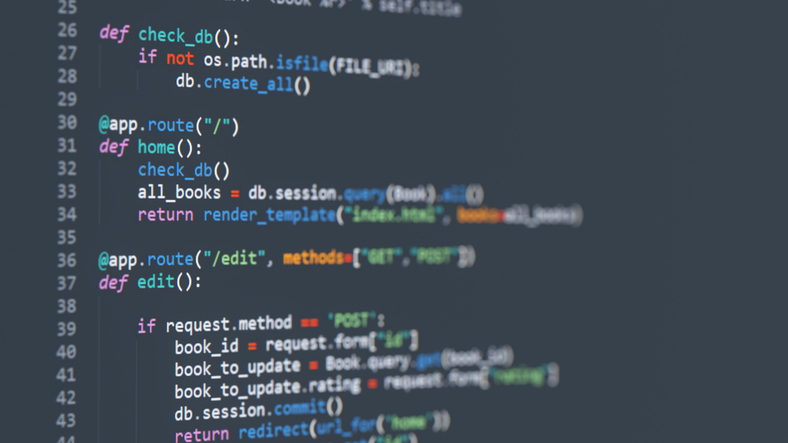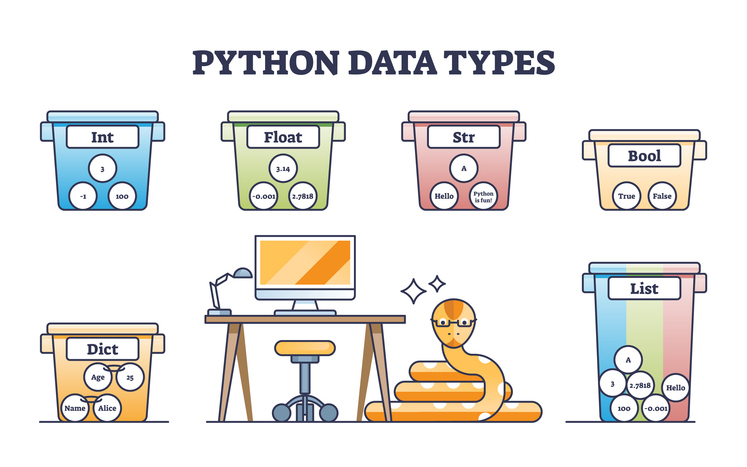14 min read
Harnessing the Power of Iteration: Exploring Python's for and while Loops
There's something almost magical about the moment you realize you can make your computer do your bidding with just a few lines of code. It's like...
4 min read
![]() The Amazing Team at Skills Data Analytics
:
Apr 22, 2024 12:19:44 PM
The Amazing Team at Skills Data Analytics
:
Apr 22, 2024 12:19:44 PM
Explore the power of Python's iteration capabilities and learn how to efficiently iterate through dictionaries using custom iterators.
Python, It's like that friend who's always got a trick up their sleeve, ready to dazzle and amaze. Whether you're a beginner just starting your programming journey or a seasoned coder diving deeper into data analysis, there's always something new to learn in Python. Today, we're going to explore one of Python's most enchanting features: iterators. I remember the first time I encountered iterators; it felt like I had unlocked a new level of programming prowess. So, buckle up! I'm excited to share this journey into the magic of Python iterators with you, sprinkling in some personal anecdotes and practical tips along the way.
Before we pull a rabbit out of the hat, let's get to know the rabbit a little better, shall we? In Python, iteration is essentially the process of going through items one by one in a collection, like items in a list or keys in a dictionary. And the magical tools that make this possible are known as Python iterators.
At the heart of Python's iteration magic are two protocols: the iterable protocol and the iterator protocol. An iterable is any Python object we can loop over (think lists, tuples, dictionaries), and an iterator is the object that does the actual iterating. They work together like a well-rehearsed magic duo. You use a for-loop, and Python automatically creates an iterator from the iterable behind the scenes. It's like magic!
Imagine you have a list of your favorite books. When you use a simple for-loop to go through them, Python internally fetches an iterator that visits each book, one after the other. It's simple, elegant, and incredibly efficient.
This simplicity is one of the reasons I fell in love with Python. It's like it's saying, "Don't worry, I'll take care of the complex stuff; you focus on creating." It invites you to experiment and explore without getting bogged down in the details.
Now, for the truly exciting part: creating our own iterators. But why, you ask? Well, sometimes, the iteration needs are unique to your project. Perhaps you're dealing with a non-standard data structure, or you need to traverse your data in a unique way. That's where custom iterators come into play.
Creating a custom iterator in Python is like crafting your own spell. You define a class that implements the __iter__() and __next__() methods. The __iter__() method returns the iterator object itself, and the __next__() method returns the next value from the sequence. If there are no more items to return, __next__() raises a StopIteration exception, signaling that the iteration is complete.
I once worked on a project where we had to analyze data from a unique file format. Each file was a mix of text and numbers, representing different measurements. By creating a custom iterator, we were able to cleanly and efficiently process each file, extracting and analyzing the data we needed. It was a game-changer for the project, and it demonstrated the power and flexibility of Python iterators.
Companies around the globe use Python's iteration capabilities to power data analysis, web scraping, and more. For instance, a prominent online retailer uses custom iterators to efficiently process vast amounts of customer data, identifying shopping trends and optimizing their inventory. Another example is a global tech giant that leverages iterators for processing large datasets in machine learning models, speeding up insights that drive product improvements.
Pro Tips:
Understanding and utilizing Python iterators is not just an academic exercise; it's a practical skill that can elevate your data analysis projects, making your work more efficient and effective. As part of our data analysis bootcamp, mastering iterators and other Python features can set you on the path to becoming a data wizard.
As we draw the curtains on our exploration of Python's iteration magic, I hope you're as excited as I am about the possibilities it unlocks. Whether you're iterating over simple lists or diving into custom iterators for complex data structures, Python's iteration capabilities are a powerful tool in your programming arsenal.
Key Takeaways:
Remember, the magic of Python iteration is not just in the language's design but in the creativity and problem-solving skills it nurtures in you as a developer. So go forth, experiment with iterators, and let the magic unfold in your projects. Happy coding!
Also Read: Exploring Python Libraries, Packages, and Modules: Unlocking the Power of Python's Ecosystem
For further exploration of data analysis and analytics, check out our bootcamp program on Data Analytics.
FAQs
1. What is an iterator in Python?
An iterator in Python is an object that enables a programmer to traverse through all the elements in a collection, such as a list or a dictionary.
2. How do Python’s iteration protocols work?
The iteration protocols consist of two parts: the iterable protocol, which returns an iterator from an iterable object, and the iterator protocol, which uses the __next__() method to fetch the next item from a sequence.
3. Can I create my own iterator in Python?
Absolutely! By defining a class that implements the __iter__() and __next__() methods, you can create custom iterators tailored to your specific needs.
4. Why are custom iterators useful in real-world applications?
Custom iterators are incredibly useful for processing data in a memory-efficient manner, especially when dealing with large datasets or when a specific iteration behavior is needed.
5. How can understanding iterators benefit my data analysis projects?
Understanding iterators can help you efficiently process and analyze large datasets, implement lazy evaluation to speed up your applications, and write cleaner, more Pythonic code.

14 min read
There's something almost magical about the moment you realize you can make your computer do your bidding with just a few lines of code. It's like...

5 min read
Picture yourself embarking on a grand adventure, not through treacherous landscapes or ancient ruins, but through the realms of Python programming,...

4 min read
Embarking on the journey of learning programming is like setting sail into a vast ocean of opportunities. Among the numerous languages charting the...